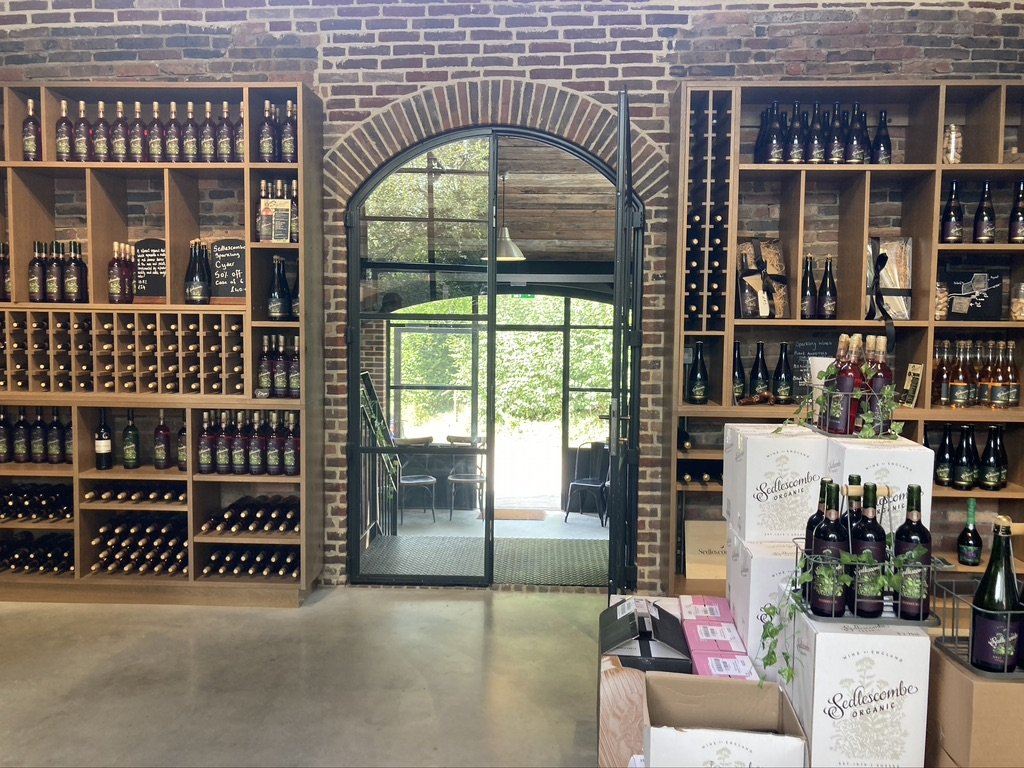Sedlescombe organic vineyard
The Millenium Vineyard with Regent and Solaris grape vines
If you’ve never visited an English vineyard before, Sedlescombe Organic Vineyard in beautiful East Sussex is a great place to start. Planted by founder Roy Cook in 1979, it’s very small – just nine acres – but a perfect example of wine-making with a distinctly personal, philosophical approach. You’ll see the grapes growing, hear the story, learn about the method and of course, sample the wines, both still and sparkling. After the tour, the options include a delicious ploughman’s lunch with local cheeses, or a cream tea (popular with hen parties, apparently). How civilised is that?
The two vineyard sites are set on south-facing slopes, exposed to the sun, the largest one sheltered by a natural wind break of alder trees. When we visited, the grapes – Regent (red) and Solaris (white) varieties –were almost ready to harvest, sitting in plump clusters on the vines. And who knew you could grow grapes on clay soil? I thought it had to be chalk, for drainage, but it turns out that clay has other advantages.
Regent red grapes almost ready for harvesting
Sipping at a delicious sparkling white called Silver Reign, we learned from our genial guide Christopher that not only are the Sedlescombe wines organic, they are biodynamic. That means they are cultivated using techniques designed by the German philosopher and agronomist Rudolf Steiner. These include using “horn manure” made from cow dung, which is packed into a cow horn and buried for six months to compost, then mixed with pure rain water and spread on the soil when the moon is in its descending phase, so as to maximise the “pull” the earth has on the fertiliser. What? Yes, I didn’t quite understand it but it’s a centuries-old practice – look it up (you might end up on the NASA website).
Ploughman’s lunch of local Brighton Blue and Sussex St Giles cheeses, pork pie, vegetable crisps and salad
Other fascinating nuggets of wine-making we learned about included riddling (turning and raising the bottles to get the sediment to go to the neck), expelling this sediment as a frozen plug, and clarifying the wine with clay rather than fish blood, so as to be vegan. (What about the cow manure, though, that’s not strictly vegan is it?). We tasted a pink sparkling made with Pinot Auxerrois, a light, still red similar to a Beaujolais Nouveau and a white sparkling that smelled of blue cheese. With our lunch of Sussex St Giles and Brighton Blue cheese ploughman’s (served with salad, vegetable crisps and pork pie) we sampled another pink sparkling called Harlot, but plumped in the end to buy the Silver Reign that we sampled at the start of the tour. Highly recommended. https://www.sedlescombeorganic.com/
Sedlescombe’s shop and tasting room



